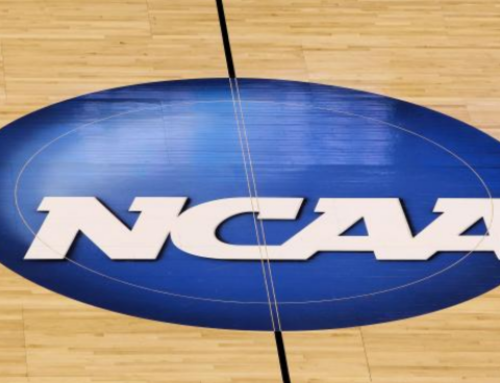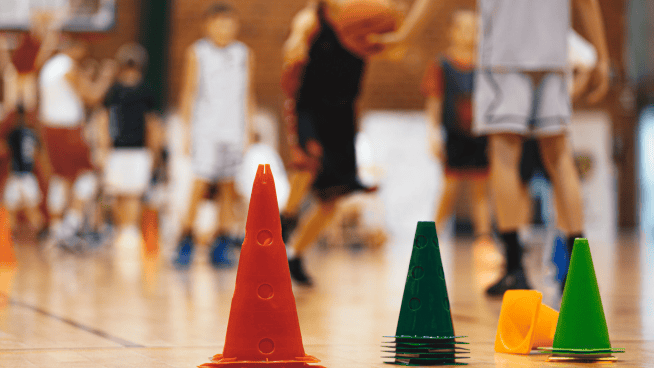Pro Advice on College Visits
A college visit can make or break your decision about a school. Here’s a compilation of the best advice on campus visits from STACK experts, coaches and athletes. Remember these tips on your next trip; they’ll help you make a more informed choice.
Take all of your official visits . . .
On an official visit, you meet with the coach and the team, see the campus and try to determine if the school and the program are right for you. Take advantage of every opportunity. You get five official visits, so use them. That’s the advice from former University of Texas softball pitcher and Team USA standout Cat Osterman. She took two visits before committing to the Longhorns, but if she had it to do over, she would take all five. “Nowadays, everyone’s committing so early that you don’t take [all five visits],” she says. “[But] I would go take five now.”
. . . but take them early.
Laura Mitchell, founder of Sports Dreammakers, Inc., says the sooner you take your visits, the better. If you wait too long, other recruits could make your final decision for you. “What tends to happen in certain sports is a student will have five visits lined up, [but] by the time they get to their third visit, other kids have started to commit,” she says. “Now some coaches have pulled back their offers, [and] the mix gets a little messy.”
NCAA rules allow you to take your first official visit on the first day of your senior year of high school, so don’t wait until November. Start making plans as soon as possible, so you can choose where you want to go instead of choosing from what’s left.
Take advantage of unofficial visits . . .
You can take an unofficial visit any time, according to Nancy Nitardy, author of Get Paid to Play: Every Student Athlete’s Guide to Over $1 Million in College Scholarships. “You can visit as a freshman, sophomore, junior, senior, any time—[and] as many times as you want,” she says; however, she recommends taking the majority of your unofficial visits during your junior year, so that “when [you] get to the fall of senior year, [you] know which ones [you] want to go back and [officially] visit.”
. . . not just Junior Days.
Many coaches have a “Junior Day” in the spring, when they bring all potential recruits on campus at one time to essentially say, “Hey, this is who you could play with,” says Nitardy. Junior Days are not official visits, so there’s nothing to lose by attending them prior to your senior year if you can.
While it might be nice to interact with potential teammates, Ray Lewis, vice president of Sports Dreammakers, Inc., says visiting during a preplanned weekend is not always the best choice. “Don’t go on [a] weekend when [the coach has] everything specifically planned out,” he advises. “Choose the option of [going] by yourself, [and] make them show you around as an individual.” He says group tours can prevent you from learning about things that are important to you, such as activities and services tailored to your personal interests outside of athletics.
See a game . . .
Always take time to check out the on-field action of the program that is recruiting you. Not only will you get to see how the athletes play together as a team, but also, Nitardy says, it’s the perfect opportunity to “see what a coach is really like on the sidelines.”
Laura Mitchell says that sitting in the stands can help you understand how your sport and the team relate to campus life. Are you sitting in a full house, or can you count the other fans? Are tickets being sold, or is attendance free? While some may think these things don’t matter, she notes that “when [you] get to school, [you] may be disappointed to see that no one really supports that sport.”
. . . and meet the whole team.
When you’re on an official visit, the coach wants you to see the positive aspects of his program, so he will introduce you to his most satisfied players. Jack Renkens, president of Recruiting Realities, reminds you to be aware that every team has unhappy players. He suggests asking your host who on the team gets little playing time, and then talking to them.
Osterman counsels paying close attention to everything that’s said and done during your 48 hours with the team. She says, “You get to really interact with the [players], and you get to see what they’re like; and sometimes [players don’t] realize [that they] give you tidbits on the good and bad about the program . . . Sometimes something will slip, or a [you’ll] pick up on a story that will make you second guess things.”
Ask questions . . .
Prepare a list of questions you want answered. “A lot of [athletes] go to campus and get awed by [everything] and they stop paying attention to the important things,” Lewis says. “They stop realizing that [playing sports] is only for a couple hours a day; they still have to live there; they still have to go to school there. So it’s very important to find out what you need to know.”
Not sure what to ask? Lewis and Mitchell suggest getting the 411 on team dynamics, your potential role on the team, academics, financial aid and life as a student-athlete on campus.
. . . and take notes.
You’re going to have a lot of information thrown your way. Bob Braman, Florida State University’s head T&F coach, says the recruiting process can get stressful. “[Young athletes usually] like something about each school, [but] as the process drags on, confusion [grows, and] they can’t remember what they particularly liked,” he says.
So write down your likes and dislikes about each school. Then, when you’re ready to make your final decision, you won’t be struggling to remember which school had the great gym but horrible student housing and which one had state-of-the-art athletic facilities but didn’t offer exactly what you wanted to major in.
RECOMMENDED FOR YOU
Pro Advice on College Visits
A college visit can make or break your decision about a school. Here’s a compilation of the best advice on campus visits from STACK experts, coaches and athletes. Remember these tips on your next trip; they’ll help you make a more informed choice.
Take all of your official visits . . .
On an official visit, you meet with the coach and the team, see the campus and try to determine if the school and the program are right for you. Take advantage of every opportunity. You get five official visits, so use them. That’s the advice from former University of Texas softball pitcher and Team USA standout Cat Osterman. She took two visits before committing to the Longhorns, but if she had it to do over, she would take all five. “Nowadays, everyone’s committing so early that you don’t take [all five visits],” she says. “[But] I would go take five now.”
. . . but take them early.
Laura Mitchell, founder of Sports Dreammakers, Inc., says the sooner you take your visits, the better. If you wait too long, other recruits could make your final decision for you. “What tends to happen in certain sports is a student will have five visits lined up, [but] by the time they get to their third visit, other kids have started to commit,” she says. “Now some coaches have pulled back their offers, [and] the mix gets a little messy.”
NCAA rules allow you to take your first official visit on the first day of your senior year of high school, so don’t wait until November. Start making plans as soon as possible, so you can choose where you want to go instead of choosing from what’s left.
Take advantage of unofficial visits . . .
You can take an unofficial visit any time, according to Nancy Nitardy, author of Get Paid to Play: Every Student Athlete’s Guide to Over $1 Million in College Scholarships. “You can visit as a freshman, sophomore, junior, senior, any time—[and] as many times as you want,” she says; however, she recommends taking the majority of your unofficial visits during your junior year, so that “when [you] get to the fall of senior year, [you] know which ones [you] want to go back and [officially] visit.”
. . . not just Junior Days.
Many coaches have a “Junior Day” in the spring, when they bring all potential recruits on campus at one time to essentially say, “Hey, this is who you could play with,” says Nitardy. Junior Days are not official visits, so there’s nothing to lose by attending them prior to your senior year if you can.
While it might be nice to interact with potential teammates, Ray Lewis, vice president of Sports Dreammakers, Inc., says visiting during a preplanned weekend is not always the best choice. “Don’t go on [a] weekend when [the coach has] everything specifically planned out,” he advises. “Choose the option of [going] by yourself, [and] make them show you around as an individual.” He says group tours can prevent you from learning about things that are important to you, such as activities and services tailored to your personal interests outside of athletics.
See a game . . .
Always take time to check out the on-field action of the program that is recruiting you. Not only will you get to see how the athletes play together as a team, but also, Nitardy says, it’s the perfect opportunity to “see what a coach is really like on the sidelines.”
Laura Mitchell says that sitting in the stands can help you understand how your sport and the team relate to campus life. Are you sitting in a full house, or can you count the other fans? Are tickets being sold, or is attendance free? While some may think these things don’t matter, she notes that “when [you] get to school, [you] may be disappointed to see that no one really supports that sport.”
. . . and meet the whole team.
When you’re on an official visit, the coach wants you to see the positive aspects of his program, so he will introduce you to his most satisfied players. Jack Renkens, president of Recruiting Realities, reminds you to be aware that every team has unhappy players. He suggests asking your host who on the team gets little playing time, and then talking to them.
Osterman counsels paying close attention to everything that’s said and done during your 48 hours with the team. She says, “You get to really interact with the [players], and you get to see what they’re like; and sometimes [players don’t] realize [that they] give you tidbits on the good and bad about the program . . . Sometimes something will slip, or a [you’ll] pick up on a story that will make you second guess things.”
Ask questions . . .
Prepare a list of questions you want answered. “A lot of [athletes] go to campus and get awed by [everything] and they stop paying attention to the important things,” Lewis says. “They stop realizing that [playing sports] is only for a couple hours a day; they still have to live there; they still have to go to school there. So it’s very important to find out what you need to know.”
Not sure what to ask? Lewis and Mitchell suggest getting the 411 on team dynamics, your potential role on the team, academics, financial aid and life as a student-athlete on campus.
. . . and take notes.
You’re going to have a lot of information thrown your way. Bob Braman, Florida State University’s head T&F coach, says the recruiting process can get stressful. “[Young athletes usually] like something about each school, [but] as the process drags on, confusion [grows, and] they can’t remember what they particularly liked,” he says.
So write down your likes and dislikes about each school. Then, when you’re ready to make your final decision, you won’t be struggling to remember which school had the great gym but horrible student housing and which one had state-of-the-art athletic facilities but didn’t offer exactly what you wanted to major in.
RECOMMENDED FOR YOU
Create A Free Recruiting Profile Today!
CaptainU helps athletes & parents not only be proactive but also to manage and take control of their entire recruiting journey.










